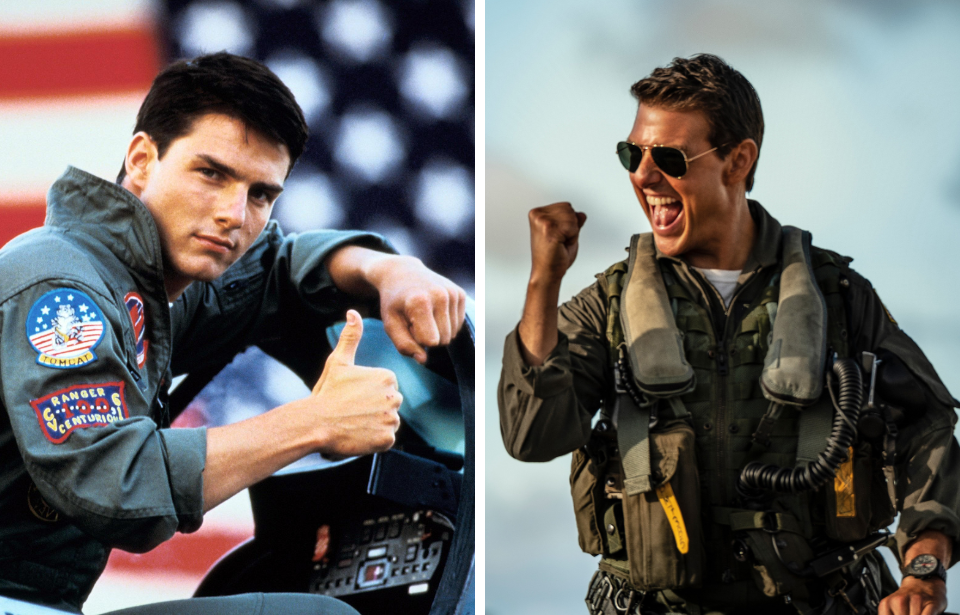Top Gun is a 1986 American action flick directed by Tony Scott. It follows Pete “Maverick” Mitchell (Tom Cruise) and his co-pilot Nick “Goose” Bradshaw (Anthony Edwards) as they attend the US Navy’s TOPGUN school. After almost four decades, Top Gun: Maverick (2022) was released, which many believe soars above the original – an opinion we can’t, in fact, argue against.
Both films provide audiences with high-octane flight sequences, showcasing the Navy’s top fighters, the Grumman F-14 Tomcat in the first and the Boeing F/A-18E/F Super Hornet in the sequel. The two also have soundtracks with songs that have since become iconic, including Kenny Loggins’ “Danger Zone” and Berlin’s “Take My Breath Away.”
Here are some facts about the Top Gun movies that only the most diehard of fans will know.
Top Gun (1986) boosted recruitment within the US Navy
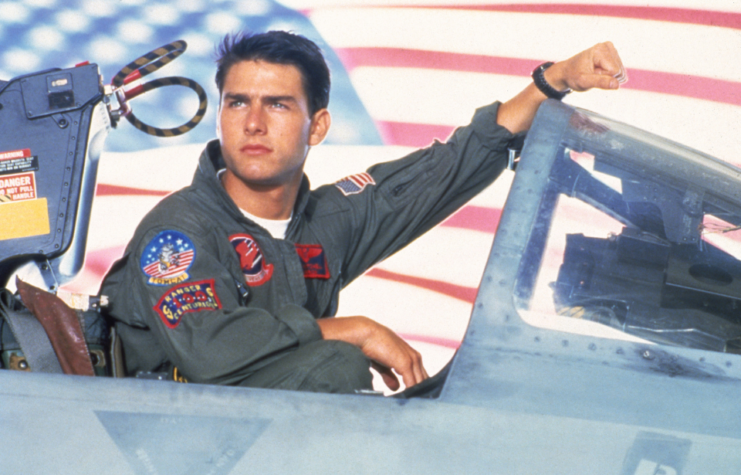
Top Gun is a high-adrenaline, action-packed film, so it’s not surprising that, after watching it, many men and women wanted to join the US Navy. To capitalize on this, the service actually set up recruitment booths in the lobbies of major theaters, to catch the attention of the “adrenaline-charged guys” leaving screenings.
This actually worked, and the Navy saw record-high application numbers for years after the movie was released.
Yes, pilots are really flying the fighter aircraft
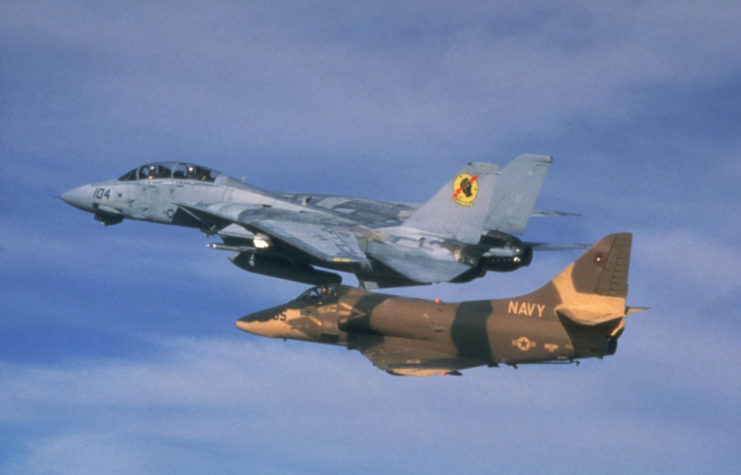
It’s a well-known fact that Top Gun and its sequel boast incredible aerial scenes, which are actually filmed in the air. When the first was filmed, CGI was in its infancy. To get the best dogfight scenes, production had to film actual F-14 Tomcats and other aircraft. This has helped it become a timeless classic. However, the logistics for filming weren’t as simple as some might think.
For the first, the Pentagon charged Paramount Pictures $1.8 million to use Miramar Naval Air Station, California; four aircraft carriers; and two dozen F-14s, Northrop F-5s and Douglas A-4 Skyhawks. All aircraft were flown by real naval aviators, who were paid an extra $23 a day working on the film. For the F-14s alone, Paramount paid $8,000 for every hour of flight time.
With the flight scenes being shot in the air, the actors in both films had to go through flight training to prepare for being in the cockpit of US Navy fighters. The training was rigorous, and every actor, including Tom Cruise, puked at some point, except for Anthony Edwards.
For Top Gun, Paramount Pictures contracted Grumman, the company that produced the F-14, to make special camera mounts for the fighters, allowing for the pilot/aircraft point-of-view to be captured.
In both films, real naval aviators flew the aircraft, and, in the famous scene in the original where Maverick flips off a Russian pilot while in a 4G negative inverted dive, the pilot Cruise gives the bird to is actually Adm. Robert Willard, who became commander of the US Pacific Fleet between 2007-09.
That being said, it’s not all real flying
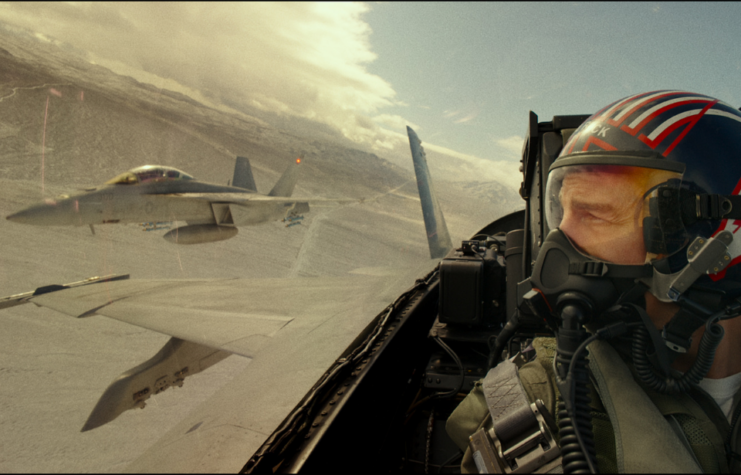
In Top Gun: Maverick, one of the famous scenes shows Maverick at the controls of an F/A-18E/F Super Hornet, flying up and in-between the two student-flown fighters. This part shows the character’s procession flying as he very quickly and successfully flies in the tight space. However, it never actually happened.
As part of a YouTube series called Mover Ruins Movies, a former General Dynamics F-16 Fighting Falcon and McDonnell Douglas F/A-18 Hornet pilot, callsign “Mover,” discusses aircraft scenes from movies. This one, in particular, he says is CGI, confirmed by the special effects crew that worked on the film. The danger of flying one F/A-18E/F in-between two others is far too high, not to mention there’s a bubble, which ranges from 500-1,000 feet, that each aircraft is supposed to maintain.
While the scene would never take place during training, it’s a real tactic. If there’s a formation of aircraft, a pilot could fly up to break it apart. Mover confirmed he’d performed such a maneuver before – but the way it is shown in the film is wrong.
MiG-28s don’t actually exist
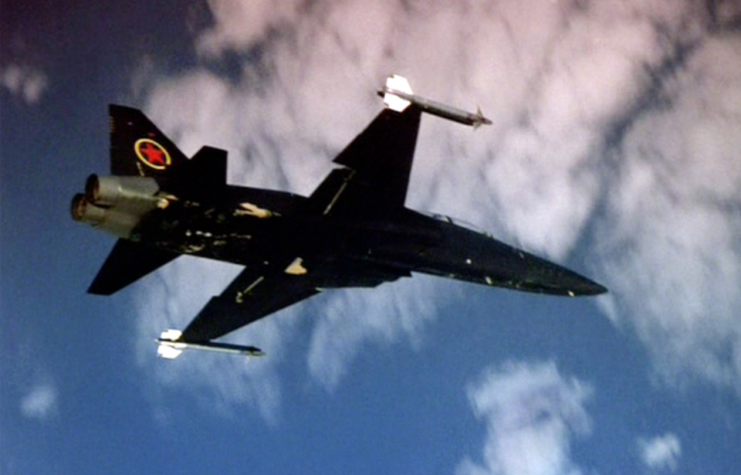
Those who know their aircraft facts will have easily picked up on this when watching Top Gun. The fictional enemy MiG-28s were actually Northrop F-5Es (single-seater) and F-5Fs (two-seater). When filming was complete, some of the light fighters retained their black paint schemes and were used to portray real aggressors at the US Navy’s real-life TOPGUN school.
The MiGs in the film, while never actually said, are supposed to be Russian. Their pilots wear black and never speak, and you can’t see their faces because of tinted visors. Since Top Gun was completed during the Cold War, it’s no surprise the Russians were the bad guys. This translates to practice aggressor squadrons. The American aviators who play the aggressors in training famously fly aircraft with red stars painted on their tails.
At TOPGUN, as Christmas approached one year, the instructors took a group photo and actually sent it to the Soviet Air Force. On it, they wrote: “Thinking of you and yours at this joyful Yuletide Season. Trust all is well and cozy at your fireside. If our nations ever pair off in war, check your six o’clock. We’ll be there, hosing you.”
Somehow, we don’t think the Russians thought it was quite as funny as the Americans did.
Top Gun (1986) at the real TOPGUN school
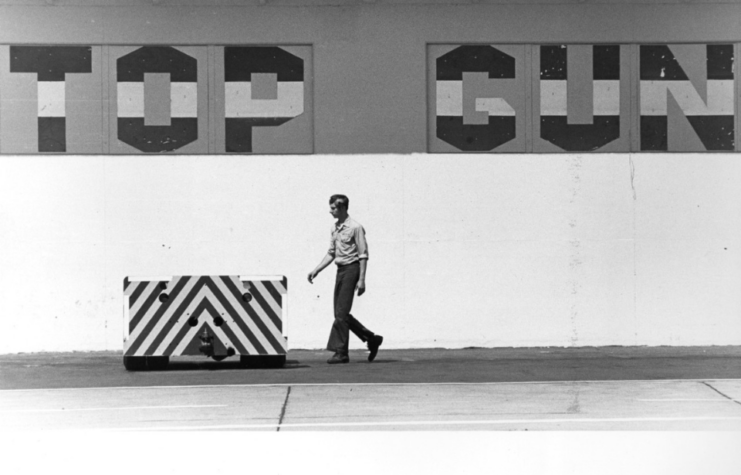
Top Gun is filled with lines and phrases that have become part of aviation culture, as well as the mainstream. “I feel the need for speed,” “Talk to me, Goose,” and “Mav, do some of that pilot s**t” are just some that’ve been quoted and paraphrased since the release of the film.
If a pilot attending the real TOPGUN school were to utter one of these phrases, or anything close to them, they would actually be fined. According to Cmdr. Guy “Bus” Snodgrass, TOPGUN is a professional school filled with professional pilots, and the quoting of the movie would turn it into a joke.
“If someone overtly references the movie – it could be a direct quote, it could be something that is really close to a direct quote – that’s an automatic $5 fine. And it’s enforced,” he wrote in his book, TOPGUN’s Top 10: Leadership Lessons from the Cockpit. “And you are expected to pay right then. You pull out your wallet and pay the $5.”
Snodgrass did admit, however, that almost everyone has been fined at some point because they’ve all seen the film.
LTJG. Ron ‘Slider’ Kerner wasn’t professional enough
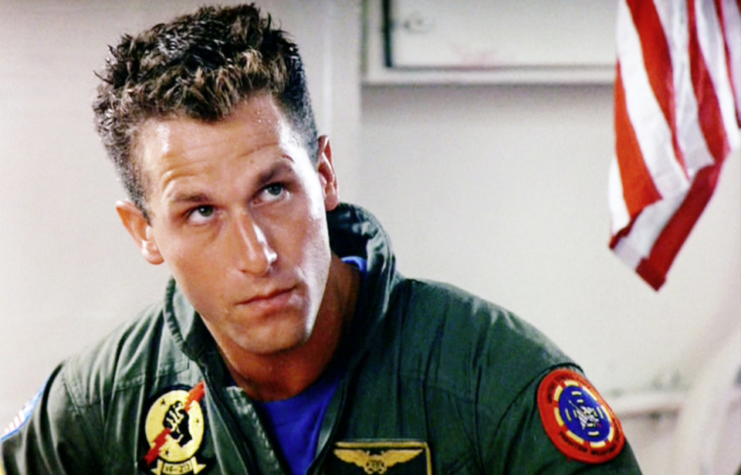
Speaking of professionalism, Rick Rossovich, the actor who plays LTJG. Ron “Slider” Kerner, recalled that his actions got him kicked off of the aircraft carrier they were filming aboard. Rossovich, like the other actors and crew, had been assigned his own bunk, which was located deep within the ship. He was uncomfortable sleeping so close to the nuclear reactors that powered the vessel and made a decision that wasn’t seen as professional enough for the Navy: he moved to another bunk.
More from us: Matthew Modine Turned Down ‘Top Gun’ for ‘Full Metal Jacket’
When the officer, who found Rossovich in his bunk, told him to leave, he smarted off to him. Rossovich was then told to report to the captain, who told him his actions were unprofessional and disrespectful. He was then ordered to leave the ship immediately.
